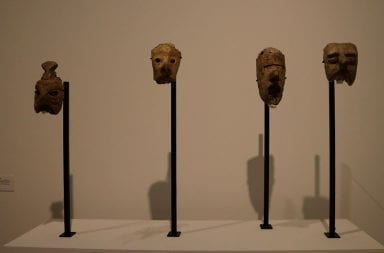In about five weeks, those who take part in March Madness office pools will become acquainted with the new 68-team NCAA Tournament bracket.
For now, they won’t have to worry about squeezing a 96-team field onto their 8.5-by-11-inch sheet of paper.
The NCAA Division I men’s basketball selection committee will not discuss further expansion of the sport’s prized postseason tournament, said Ohio State athletic director Gene Smith.
“I don’t anticipate we’ll be discussing that at all,” Smith told The Lantern last week. “We went to 68 after a thorough vetting with the membership. We got feedback from conferences.”
Smith is chair of the committee for the 2010–11 academic year. He has been a committee member for four years.
Smith said the group will meet in Indianapolis from Feb. 15–18, then again from March 8 until the conclusion of the tournament.
The NCAA expanded the tournament from 65 to 68 teams last April after agreeing to a 14-year, $10.8 billion contract with CBS and Turner Sports to showcase every game of the three-week spectacle. Initial discussions centered on increasing the field to 96 teams by collapsing the 32-team National Invitational Tournament field into the NCAA Tournament domain.
Those talks were tabled when the contract was signed. Smith says they’ll remain sidelined for the time being.
“Obviously, we discussed that with potential partners and we ended up with Turner and CBS,” Smith said. “So I think we’ve vetted it pretty well and I do not anticipate in the near future that we’ll be discussing that again.”
Merging the NIT and NCAA Tournament appears to be a sensible eventuality, said former Buckeye Clark Kellogg, a college basketball analyst for CBS.
“The 96 teams, because of the NIT being owned by the NCAA, and the NCAA tournament being run by the NCAA, that was a number that got thrown around because it made sense that they would just marry those two entities,” said Kellogg, who has provided color commentary for CBS’s coverage of the last two NCAA Championship games.
In an interview with The Lantern in late August, Kellogg initially opposed the proposal of a 96-team bracket because of the never-ending argument from teams on the outside looking in.
“Where would you draw the line? Because if you’re trying to make sure that every worthy team gets in, or deserving team gets in, how do you determine what number that is?” Kellogg said. “There’s 68 now, but there’s always going to be the 69th and 70th team. If you go to 72, there’s a 73rd and 74th team. So my initial position was leave it as it is or let everybody in. Figure out a way to make it more like a high school tournament. And that obviously wasn’t something on the table.”
College basketball expert Jerry Palm of CBS Sports said he doesn’t see any advantages to a 96-team field.
“There are no advantages. In (Division I), it’s way too freakin’ big,” Palm said. “There is no chance whatsoever that that’s a good thing. You’re basically doing away with the NIT; you’re adding 32 teams to the field that have no business being in this tournament who have no chance of any success whatsoever. It’s ridiculous.”
Palm isn’t content with the 68-team format, either.
“I think it’s still four too many. The last few years we’ve had teams in the tournament … who should really be in the NIT,” Palm said. “Now we’re going to have three more of those teams. I think when you lower the standard even this little bit … this is why we have the NIT. I think 68 is too big. I know why they went to 68, they wanted to balance the regions so I understand that.
“I don’t really have a big complaint about it, but to me the better way to balance the regions would go back to 64, but nobody ever goes backwards.”
There are 347 Division I college basketball teams. Increasing the number of tournament participants from 65 to 68 teams increases the percentage of participants from 18.8 percent to 19.7 percent. Opening up the field to 96 teams would boost the percentage of participants to 27.7 percent.
“You had more NCAA Division I basketball teams, but you had a smaller percentage compared to other sports that were being able to be eligible for postseason play,” Kellogg said. “So from that standpoint I said, ‘Well maybe it makes some sense. I mean, if we only have 18 or 19 percent of our teams playing in the NCAA Tournament, and the other sports that have championships have 25 percent, maybe 30 percent of their teams, then why not consider expanding the tournament to be, from a percentage standpoint, more equal?'”
UConn athletic director Jeff Hathaway will chair the committee during the 2011–12 academic year. Attempts to reach Hathaway did not immediately receive responses.
NCAA President Mark Emmert discussed the 68-team field and prospects of further tournament expansion when he met with local media before the OSU-Purdue football game Oct. 23.
“I am excited about where we wound up right now,” Emmert said. “I think the three-team expansion is going to work well. I think we need to get into this and get through a number of cycles before we talk about whether we do anything else, but I think we wound up in a very good spot.”
Jimmy Oldham and Chris Biderman contributed to this story.


